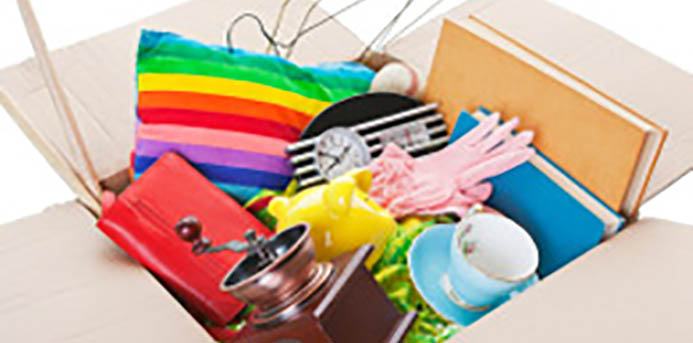Clutter and I have a complicated history.
My mother craves neatness and order in her serene suburban bungalow while my late grandmother preferred a more freewheeling environment with cabinets full of dolls, piles of books and pieces of art, mirrors and shelves covering every wall. I fall somewhere in between; keeping the main living areas clutter-free while allowing a bit more chaos underneath the surface.
But in my case at least, out-of-sight wasn’t out-of-mind. After realizing that the preponderance of stuff was impacting my peace of mind, I recently tackled the problem and within 3 weeks, I’d cleared out every single item in a formerly cluttered room in the basement, donated 5 boxes of books and organized all the drawers. It wasn’t easy, but it sure felt good.
Here are a few tips if you’d like to follow suit:
- Recycling is the low-hanging fruit. For an easy feeling of accomplishment, start by eliminating cardboard product boxes, old greeting cards, magazines and newspapers that have begun to pile up throughout the house. Hint: Save smaller boxes, which make excellent drawer organizers. My iPhone box makes an ideal container for car keys in the kitchen drawer.
- Don’t be such a sentimental sap. Identification with “stuff” imbues even the least meaningful object with the power of a talisman. Just remember: you are not your things, your things are not you, and they are not the family members/friends/loved ones who once owned them. At the end of the day, your things are just things, and remembering that fact will make them easier to part with.
- Question every item and don’t overinflate its importance. When we identify with our things, it’s easy to overestimate their impact on our lives. Sure, you learned a lot from those college textbooks, but how often will you really look at them in the future? If objects serve you—whatever that means to you—keep them. If they no longer serve you (or worse, you find yourself serving them, paying storage rental, etc.), it’s time to cut them loose. Just do it.
- Go through every problem area (at least) twice. Everything is relative and items that seemed too precious to part with on the first cleanse will often lose their hold over you when seen in a new context. Wait at least a couple of days between purges for maximum effect.
- Challenge yourself / Make it a game. When de-cluttering the bookshelves, I challenged myself to find 7 books to donate. Over the next few days, I boxed up, you guessed it, thrice that number.
- Digitize: Photos, music and books can be digitized and the physical copies either discarded or, if you’re anything like me and concerned about future EMP pulses from the sun wiping out our electrical infrastructure, stored neatly in books or boxes. Use a digital picture frame or your iPad to actually display your favorites. More advice on exactly how to do this: Organizing Your Photos: Step 1 Going Digital
- Don’t let yourself get discouraged. Faced with boxes of old books, stuffed drawers or an entire storage room piled with things, the idea of questioning every item can seem daunting, but the results are worth the effort.

